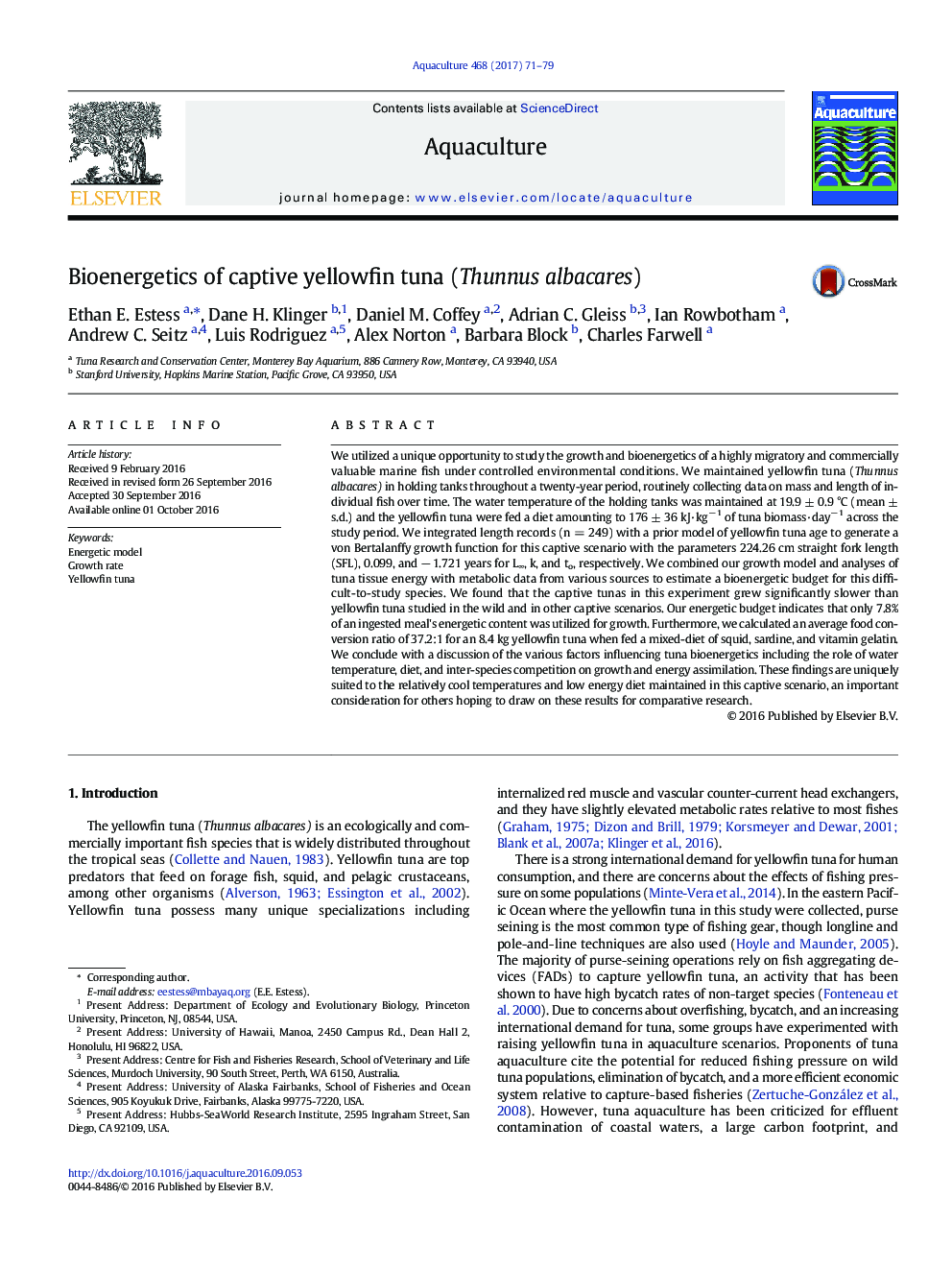| Article ID | Journal | Published Year | Pages | File Type |
|---|---|---|---|---|
| 5539492 | Aquaculture | 2017 | 9 Pages |
Abstract
We utilized a unique opportunity to study the growth and bioenergetics of a highly migratory and commercially valuable marine fish under controlled environmental conditions. We maintained yellowfin tuna (Thunnus albacares) in holding tanks throughout a twenty-year period, routinely collecting data on mass and length of individual fish over time. The water temperature of the holding tanks was maintained at 19.9 ± 0.9 °C (mean ± s.d.) and the yellowfin tuna were fed a diet amounting to 176 ± 36 kJ·kgâ 1 of tuna biomass·dayâ 1 across the study period. We integrated length records (n = 249) with a prior model of yellowfin tuna age to generate a von Bertalanffy growth function for this captive scenario with the parameters 224.26 cm straight fork length (SFL), 0.099, and â 1.721 years for Lâ, k, and to, respectively. We combined our growth model and analyses of tuna tissue energy with metabolic data from various sources to estimate a bioenergetic budget for this difficult-to-study species. We found that the captive tunas in this experiment grew significantly slower than yellowfin tuna studied in the wild and in other captive scenarios. Our energetic budget indicates that only 7.8% of an ingested meal's energetic content was utilized for growth. Furthermore, we calculated an average food conversion ratio of 37.2:1 for an 8.4 kg yellowfin tuna when fed a mixed-diet of squid, sardine, and vitamin gelatin. We conclude with a discussion of the various factors influencing tuna bioenergetics including the role of water temperature, diet, and inter-species competition on growth and energy assimilation. These findings are uniquely suited to the relatively cool temperatures and low energy diet maintained in this captive scenario, an important consideration for others hoping to draw on these results for comparative research.
Related Topics
Life Sciences
Agricultural and Biological Sciences
Aquatic Science
Authors
Ethan E. Estess, Dane H. Klinger, Daniel M. Coffey, Adrian C. Gleiss, Ian Rowbotham, Andrew C. Seitz, Luis Rodriguez, Alex Norton, Barbara Block, Charles Farwell,
